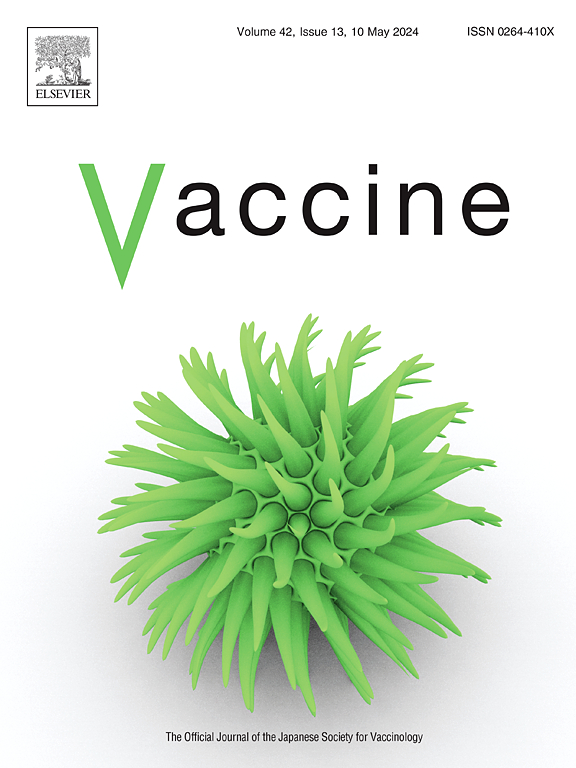“If I know about it of course I would give my son and daughter”, barriers to and enablers of accessing human papillomavirus vaccination among women from refugee and asylum-seeking backgrounds resettling in Melbourne, Australia – A qualitative study
IF 4.5
3区 医学
Q2 IMMUNOLOGY
引用次数: 0
Abstract
Background
Women from refugee and asylum-seeking backgrounds have lower human papillomavirus vaccination (HPVV) rates than host country populations. Improving HPVV rates is important in the prevention of cervical cancer. This qualitative study gained an in-depth understanding of refugee and asylum-seeking women's barriers to and enablers of accessing HPVV services and information for their children post-resettlement in Melbourne, Australia.
Methods
A qualitative study using semi-structured interviews was conducted with a purposive sample of women from Myanmar, Iraq, Syria and women seeking asylum from different countries. A bi-cultural worker assisted in recruitment and interpreting during data collection. Between December 2021 and September 2023 interviews were conducted in the participants first language with a bi-cultural worker or volunteer interpreting into English during the interview. Audio recordings of English dialogue were transcribed verbatim. Reflexive thematic analysis was used to analyse and report data.
Results
Thirty-one refugees and 12 women seeking asylum from eleven countries were interviewed. Barriers to and enablers of HPVV were identified. 1) Barriers to awareness and knowledge of HPVV included: limited awareness of HPVV, lack of access to HPV vaccine information in the pre-arrival context, uncertainty about HPV vaccine safety and effectiveness, gender association with HPVV, negative influence of COVID vaccination on HPV vaccine perceptions. Enablers included: Understanding future benefits: prevention is better than cure 2) Barriers to sociocultural influences included: necessity for HPVV at recommended age, Enablers included: promoting peer support 3) Barriers to health information seeking included: missed opportunities for information delivery at schools and language classes, inconsistent messaging. Enablers included: trust in the education programs, health care provider recommendation, desire for new knowledge.
Conclusion
Improving HPVV access requires a multi-faceted approach to enhance women's awareness and knowledge. Key strategies include providing routine HPVV education through resettlement services and school programs, supporting healthcare providers in educating women unfamiliar with HPVV, and delivering clear messaging about the recommended age and addressing gender-related misconceptions.
“如果我知道,我当然会给我的儿子和女儿”,重新安置在澳大利亚墨尔本的难民和寻求庇护背景的妇女获得人乳头瘤病毒疫苗接种的障碍和促进因素——一项定性研究
背景:难民和寻求庇护背景的妇女的人乳头瘤病毒疫苗接种率低于东道国人口。提高人乳头状瘤病毒感染率对预防子宫颈癌很重要。这项定性研究深入了解了难民和寻求庇护妇女在澳大利亚墨尔本重新安置后为其子女获得hpv服务和信息的障碍和促进因素。方法采用半结构化访谈的定性研究方法,对来自缅甸、伊拉克、叙利亚的妇女和来自不同国家寻求庇护的妇女进行有目的的抽样调查。在数据收集期间,一名双文化工作者协助招募和口译。在2021年12月至2023年9月期间,以参与者的母语进行访谈,访谈期间由双文化工作者或志愿者翻译成英语。英语对话的录音被逐字抄录。反身性专题分析用于分析和报告数据。结果访谈了来自11个国家的31名难民和12名寻求庇护的妇女。确定了HPVV的障碍和促进因素。1)对HPV的认识和知识障碍包括:对HPV的认识有限,在到达前缺乏获得HPV疫苗信息的途径,HPV疫苗安全性和有效性的不确定性,与HPV的性别关联,COVID疫苗接种对HPV疫苗认知的负面影响。促进因素包括:了解未来的好处:预防胜于治疗2)社会文化影响的障碍包括:在推荐年龄接种hpv疫苗的必要性2)促进因素包括:促进同伴支持3)寻求健康信息的障碍包括:在学校和语言课上错过了信息传递的机会,信息传递不一致。促进因素包括:对教育计划的信任、医疗保健提供者的推荐、对新知识的渴望。结论提高hpv疫苗的可及性需要从多方面提高妇女的认识和知识。关键战略包括通过重新安置服务和学校项目提供常规hpv教育,支持卫生保健提供者对不熟悉hpv的妇女进行教育,并就推荐年龄和消除与性别有关的误解传达明确的信息。
本文章由计算机程序翻译,如有差异,请以英文原文为准。
求助全文
约1分钟内获得全文
求助全文
来源期刊

Vaccine
医学-免疫学
CiteScore
8.70
自引率
5.50%
发文量
992
审稿时长
131 days
期刊介绍:
Vaccine is unique in publishing the highest quality science across all disciplines relevant to the field of vaccinology - all original article submissions across basic and clinical research, vaccine manufacturing, history, public policy, behavioral science and ethics, social sciences, safety, and many other related areas are welcomed. The submission categories as given in the Guide for Authors indicate where we receive the most papers. Papers outside these major areas are also welcome and authors are encouraged to contact us with specific questions.
 求助内容:
求助内容: 应助结果提醒方式:
应助结果提醒方式:


